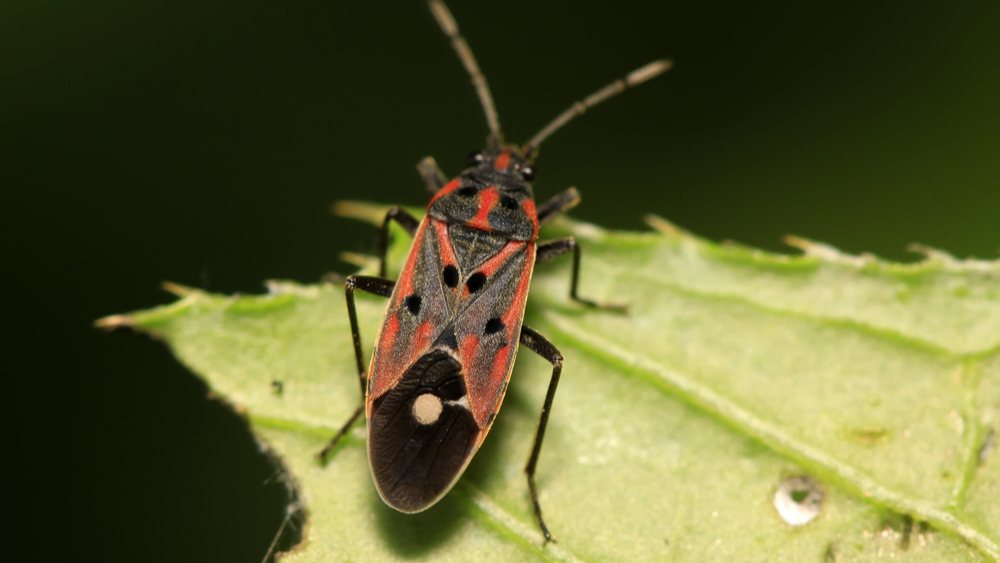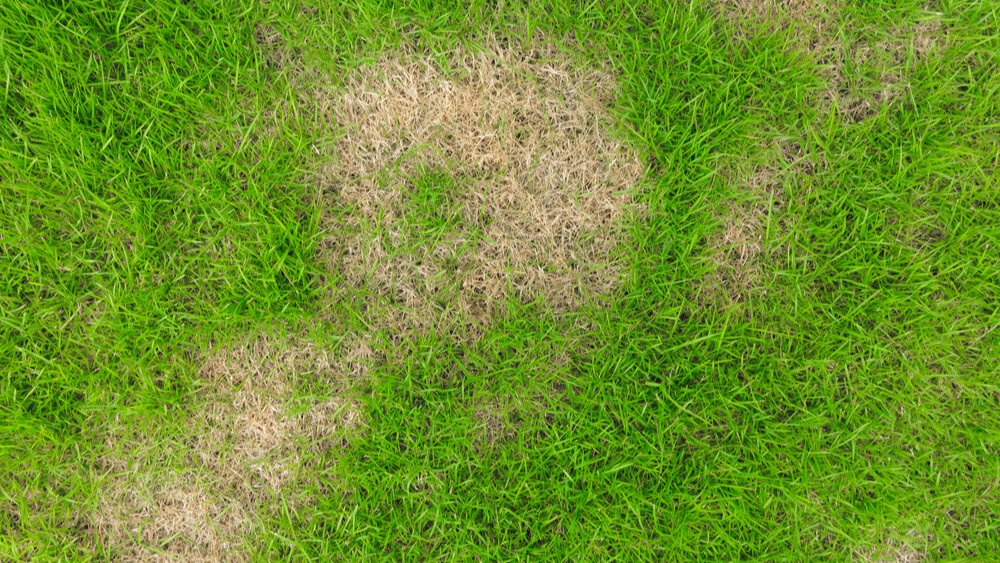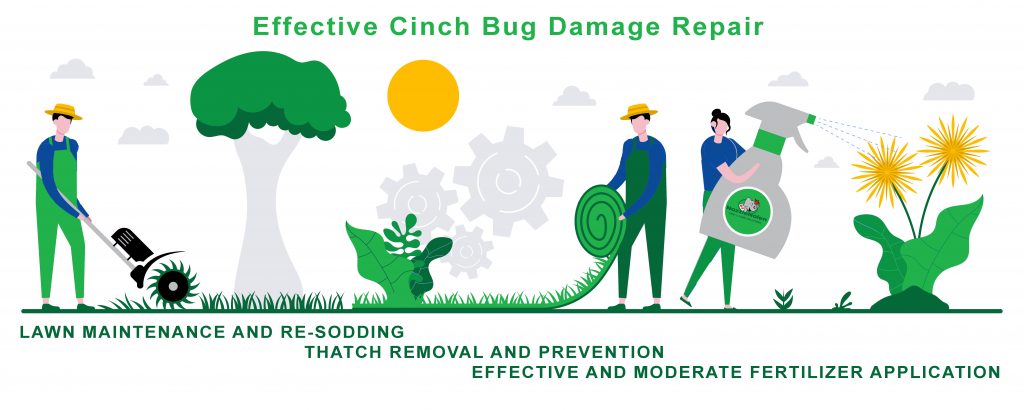
Having a beautiful lawn is a common goal for most South Florida property owners. Whether it’s a well-manicured green space with palm trees and gardens, a space for children and pets, or just a nice place to gaze out on from the window, your grass is an important part of your home. Unfortunately, it’s a living thing and undergoes a lot of stress in the South Florida environment. If you suspect you’ll need chinch bug damage repair for dead grass, you’ll first need to know what steps to take.
How Do You Know You Have Chinch Bugs in Your Yard?
Chinch bugs are lawn insects found here in south Florida that, if left alone, can cause substantial damage to your lawn. Chinch bugs are not easily spotted because they live in the thatch layer beneath the grass, which is what they feed on. They pierce the plant with their mouth sucking all of the nutrients out.

While feeding, Chinch bugs release enzymes that help the feeding process. Unfortunately, these enzymes continue to dame the plant, turning it brown and potentially killing it.
A common way to identify Chinch bug damage over drought is if your grass does not green back up after heavy rain or being watered. If these pests have damaged your lawn, your lawn will remain brown.
Knowing What Is Damaging Your Lawn
One of the major problems in caring for your lawn is understanding the different stresses it faces throughout each season. The most obvious is the heat and sun—we live in a tropical climate, and while most of us use hardy St. Augustine grass, all grass needs a combination of water, fertilizer, and insect control to thrive. Unfortunately, the signs that you’re facing an infestation often look a lot like heat or fertilizer damage.
For example, the first signs of too many chinch bugs is often patches of yellowed grass that quickly turns brown, which could just as easily be sun scorching.
The easiest way to verify that you have chinch bugs is to pull up a small portion of the lawn near the dead areas—you should see several bugs moving in and out of the thatch that may resemble beetles. If you have a significant population, adults may move to nearby leaves during the day.
Stopping the Impact of Chinch Bugs
Once you have identified the infestation, you need to consider your options for treatment. Chinch bugs go through up to 10 generations per year and therefore have developed a resistance to many different pest management products. An adult female Chinch Bug will deposit over 250 eggs on average in her lifetime. She may lay as little as four eggs a day, but she will oviposit for many continuous weeks. The female chinch bug deposits her eggs on St. Augustine grass close to where the plant contacts the soil.
While it may seem easy to use broad-spectrum products and contact insecticide spray to “knock down” the number of chinch bugs, it is important to remember where they live. Spray treatments must come in contact with the insects to work, which can be very difficult when trying to reach the thatch layer underneath the grass.
Many integrated pest management programs take advantage of systemic pesticides that will continue to be effective against these pests after application. These water-soluble chemicals are absorbed into the grass then ingested by chinch bugs. This is an effective method, although it takes a professional pest management company to make sure you are targeting the correct lawn insects rather than just applying chemicals.

Steps to Effective Chinch Bug Damage Repair
Whether you identified the areas of infestation yourself or with the help of a pest management professional, there are steps you can take to fix the current problem and prevent future ones, which are:
- Lawn maintenance and re-sodding – Captiva is currently the only known St. Augustine grass variant with known chinch bug resistance and, at the very least, should be considered for areas subjected to extreme heat or other stresses.
- Thatch removal and prevention – While cutting thatch can be difficult, a lawn and pest care professional can help with solutions regarding top-dressings and other means.
- Effective and moderate fertilizer application – Ensuring you don’t use too much fertilizer will help reduce nitrogen fixation.
Getting Professional Help with Your Lawn
Trying to time and apply the different pesticides needed for effective chinch bug control can be difficult, and choosing the wrong one can lead to killing off the chinch bug’s natural predators. It also is not easy to ensure that fertilizer is effectively applied and not just causing the same conditions that led to the infestation in the first place.
Professional pest control specialists who also offer lawn care services can provide significant value to homeowners, whether they are struggling to bring their St. Augustine grass back to life or simply trying to ascertain what happened to their lawn.
Nozzle Nolen: Your Source for Effective Chinch Bug Damage Repair
If you need help with your lawn, you should work with a locally-owned and operated company that provides integrated pest and lawn care management. Nozzle Nolen has served South Florida for 70 years, and our tactics for chinch bug damage repair combine our vast experience with the latest chinch bug removal techniques.
Call us today at 800-226-6536 or Contact Us for a complimentary inspection and plan of attack for your chinch bug problem.




